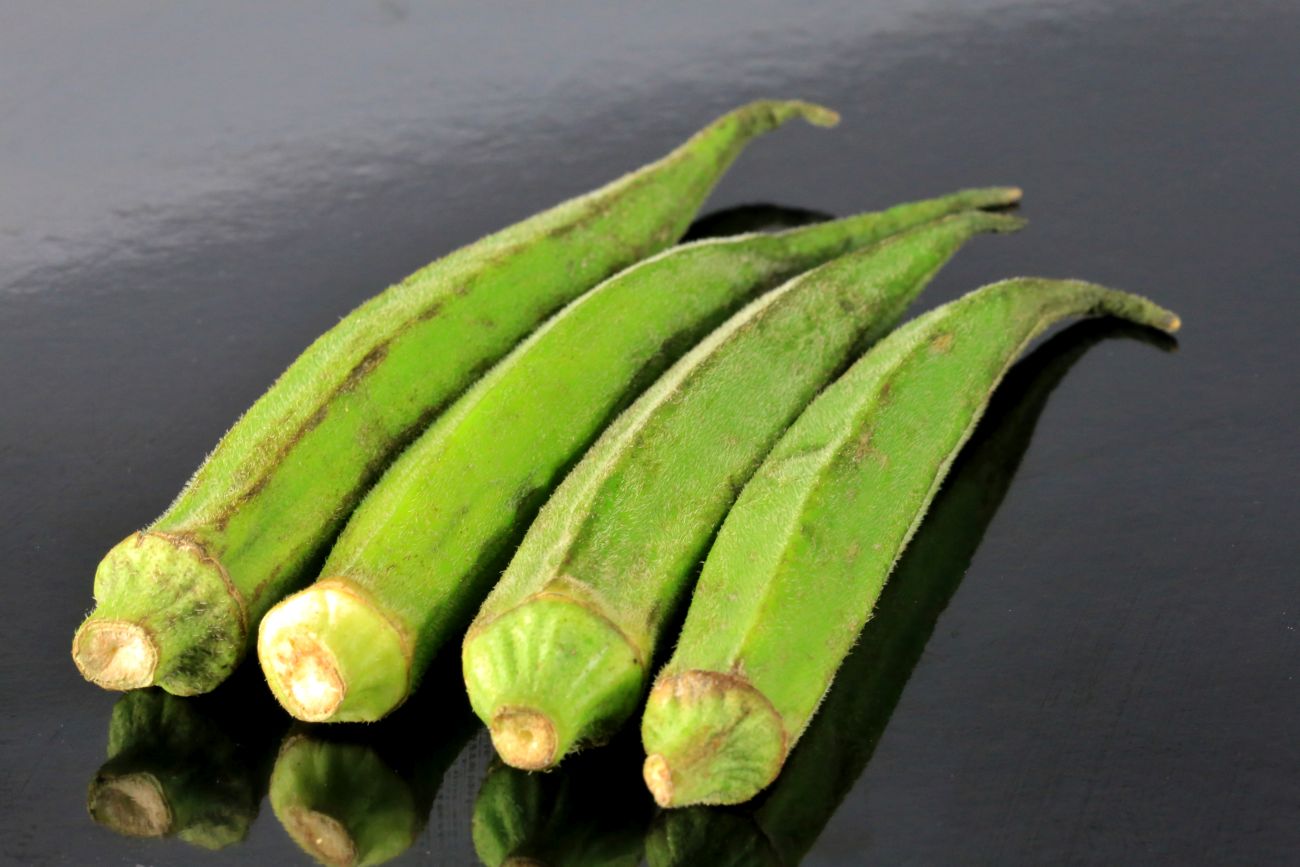In 2017, the Centers for Disease Control and Prevention reported that more than 30 million Americans had diabetes. That doesn’t count the 84 million U.S. adults who are pre-diabetic. With some experts saying that diabetes is becoming an epidemic, it’s helpful to know that you can make healthy food choices that keep your blood sugar stable.
Although some Internet rumors claim that drinking water in which okra has been soaked in can cure diabetes, the vegetable is not a miracle treatment for blood sugar issues. However, it does contain properties that help regulate glucose levels and deliver other health-boosting effects.
What is Okra?
Okra is the seed pod from a plant in the cotton family. It’s technically a fruit, but most people consider it to be a vegetable. Although fried okra is popular in southern cooking, that’s not the best preparation for people with diabetes since you can make okra taste delicious with healthier cooking methods.
According to Medical News Today, okra has been used since ancient times to treat certain ailments. More recently, researchers have been looking into the benefits of okra for managing diabetes. Most research has been done on animals, and there is no conclusive evidence that okra has the same effects on humans, but the evidence is promising.
Okra’s Effect on the Body
Okra is low in calories and packed with nutrients. According to American Diabetes Advocates, one 100-gram cup of okra contains 30 calories, 22 percent of the U.S. RDA of folates, and 3.2 grams of dietary fiber. The food is also rich in vitamins A, K, and C.
The antioxidants in okra help protect against certain cancers, macular degeneration, and age-associated cognitive decline. The fiber is good for your cardiovascular system and digestion. With eight percent of the U.S. RDA of calcium, okra can help you build and maintain strong bones.
Benefits for Diabetics
Okra Contains Mucilaginous Fiber
The type of fiber that okra has expands in the digestive system, helping you process the foods that you eat and keeping you full. This may prevent you from binging on snacks or unhealthy treats that can raise your blood sugar levels.
Moreover, consuming foods rich in dietary fiber can help control blood glucose levels, according to the Mayo Clinic. This effect is partly due to the fact that the fiber slows absorption in the gut, preventing your blood sugar levels from spiking.
Being overweight or obese increases your risk of developing type 2 diabetes. It also exacerbates other health problems associated with diabetes. Because high-fiber foods, such as okra, are more filling and energy dense, they can also help you lose weight.
Okra Is a Healthy Source of Carbohydrates
Although some people claim that carbohydrates are the enemy of diabetics, these nutrients are necessary for fueling the body. People with diabetes have to ensure that they’re eating the right types of carbs, though.
Diabetes Forecast claims that there is not a great deal of long-term research into low-carb diets for diabetics, many experts agree that foods with a moderate level of carbohydrates can be beneficial, especially if they contain plenty of other nutrients. Okra fits the bill.
Eating Okra Helps You Manage Stress
Okra seeds have properties that lower levels of chemicals in the body that become elevated when you’re under stress. One of these chemicals is blood sugar.
Okra May Lower Cholesterol
According to the American Heart Association, diabetes is linked to low “good” cholesterol levels and high “bad” cholesterol. Because high blood glucose can damage your cardiovascular system, keeping cholesterol in check is beneficial for diabetics.
Okra Can Prevent Fatigue
EndocrineWeb says that diabetes is easier to control when you exercise. However, fluctuations in blood sugar can cause fatigue. Scientists have found that okra may prevent fatigue, helping you maintain your quality of life and focus on your health.
Recipe Ideas That Include Okra
Some people turn their noses up at the thought of eating okra because the gelatinous juice has a slimy texture. Others are only familiar with fried okra. You can turn okra into a healthy dish and give it a palatable texture by cooking it properly.
Grilled Okra
Okra’s texture is fresh and crisp when it’s cooked quickly over high heat. Spicy Southern Kitchen includes a recipe for grilled okra with chipotle sauce. All you have to do is coat the okra in olive oil and thread it onto skewers. Then, grill it on a pan or outdoor grill for two to three minutes per side.
Okra Gumbo
You can use the gel in okra to your advantage when you’re cooking stews, which rely on the mucilage as a thickening agent. This chicken and okra gumbo recipe from Food & Wine incorporates chicken for protein and andouille sausage for authentic flavor. The okra is added in the last 15 minutes of cooking and simmered until tender.
Seared Okra with Tomatoes
Searing the okra helps it retain its crunch and prevents it from becoming gooey. When you make this seared okra recipe from Simply Recipes, you’ll slice fresh okra diagonally just before browning it in vegetable oil. Then, add it to a sauce made with tomato paste, chicken broth, vinegar, and fresh tomatoes.
Roasted Okra
Roasting okra in the oven delivers a crispy texture that might curb your cravings for French fries. According to 100 Days of Real Food, it takes about 45 minutes to roast okra to a perfect texture in a 425-degree oven.
Okra Masala
Okra doesn’t have to bring up flavors associated with American nostalgia. It can take on an exotic essence when it’s combined with the right spices. Cookilicious offers a recipe for Okra/Bhindi masala that incorporates okra into a thick tomato gravy.
